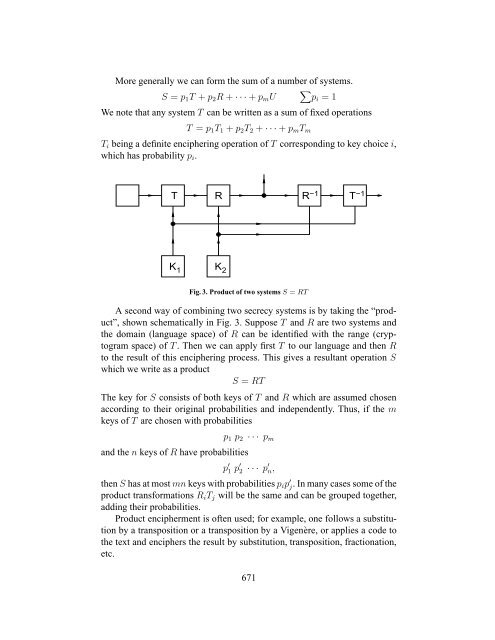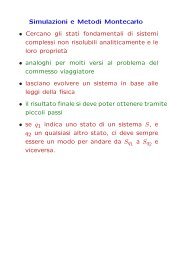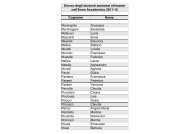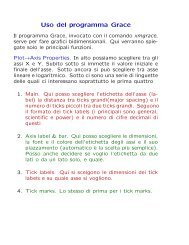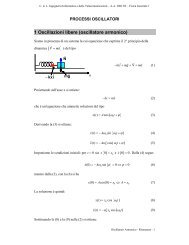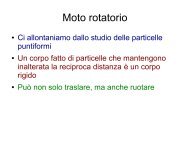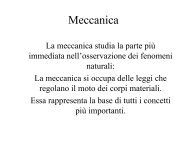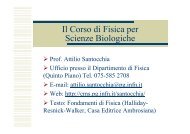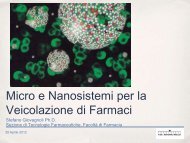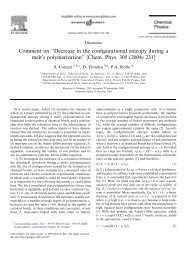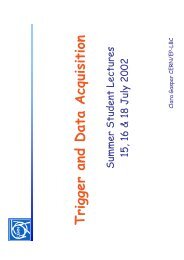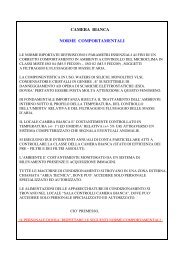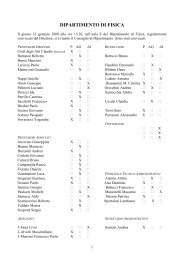Communication Theory of Secrecy Systems - Network Research Lab
Communication Theory of Secrecy Systems - Network Research Lab
Communication Theory of Secrecy Systems - Network Research Lab
You also want an ePaper? Increase the reach of your titles
YUMPU automatically turns print PDFs into web optimized ePapers that Google loves.
More generally we can form the sum <strong>of</strong> a number <strong>of</strong> systems.<br />
S = p1T + p2R + · · · + pmU<br />
pi = 1<br />
We note that any system T can be written as a sum <strong>of</strong> fixed operations<br />
T = p1T1 + p2T2 + · · · + pmTm<br />
Ti being a definite enciphering operation <strong>of</strong> T corresponding to key choice i,<br />
which has probability pi.<br />
T R<br />
K 1<br />
K 2<br />
Fig. 3. Product <strong>of</strong> two systems S = RT<br />
R −1<br />
T −1<br />
A second way <strong>of</strong> combining two secrecy systems is by taking the “product”,<br />
shown schematically in Fig. 3. Suppose T and R are two systems and<br />
the domain (language space) <strong>of</strong> R can be identified with the range (cryptogram<br />
space) <strong>of</strong> T . Then we can apply first T to our language and then R<br />
to the result <strong>of</strong> this enciphering process. This gives a resultant operation S<br />
which we write as a product<br />
S = RT<br />
The key for S consists <strong>of</strong> both keys <strong>of</strong> T and R which are assumed chosen<br />
according to their original probabilities and independently. Thus, if the m<br />
keys <strong>of</strong> T are chosen with probabilities<br />
and the n keys <strong>of</strong> R have probabilities<br />
p1 p2 · · · pm<br />
p ′ 1 p ′ 2 · · · p ′ n,<br />
then S has at most mn keys with probabilities pip ′ j . In many cases some <strong>of</strong> the<br />
product transformations RiTj will be the same and can be grouped together,<br />
adding their probabilities.<br />
Product encipherment is <strong>of</strong>ten used; for example, one follows a substitution<br />
by a transposition or a transposition by a Vigenère, or applies a code to<br />
the text and enciphers the result by substitution, transposition, fractionation,<br />
etc.<br />
671


